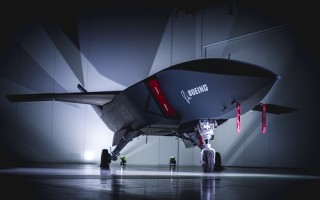Origins of the Kill Web - Blog
September 29, 2020WARFARE EVOLUTION BLOG: DARPA (Defense Advanced Research Projects Agency) officials announced the concept of the Kill Web at the C4ISRNET Conference in May 2018. Throughout the history of war, many elements of the Kill Web were being developed independently, but the dots were not connected until Admiral William Owens wrote a paper about a “system of systems”. He proposed integrating command-and-control, the intelligence from the sensors, and the weapons together in the mid 1990s. He also coined the acronym ISR (for intelligence, surveillance, and reconnaissance).
UFOs and the kill web - Blog
July 29, 2020WARFARE EVOLUTION BLOG. In late 2013, Combat Aircraft Monthly magazine published an article about the Iranian military’s encounters with UFOs (Unidentified Flying Objects). The article states that in November 2004 and again in January 2012, the Iranian Air Force scrambled their fighter planes to intercept unidentified aircraft flying over their secret nuclear facilities. The pilots reported that the invading aircraft were spherical, emitted a greenish light, executed maneuvers that defied the laws of physics, disabled the electronic systems onboard their fighter planes, and flew away at MACH 10 (7672 MPH). Iranian authorities insisted that these unidentified aircraft were advanced-technology reconnaissance drones flown by America’s CIA. This incident, among many others, demands that we explore UFOs and how they fit in the kill web.
Unmanned fighter planes (UCAVs) and the kill web - Blog
June 09, 2020WARFARE EVOLUTION BLOG. Unmanned autonomous fighter planes are the most interesting elements in the advanced kill web, even more intriguing than the manned super-stealthy 6G fighter planes we discussed in previous articles. UCAVs (Unmanned Combat Aerial Vehicles) have the potential to render our enemy’s A2/AD (anti-access/area-denial) strategies completely obsolete. These platforms appear under different names: Loyal Wingman, ATC (Airpower Teaming System), Dark Sword, Taranis, Remote Carriers, nEUROn, and Sidekicks. To understand how they enhance the kill web, we need to look at their specifications and their missions.











